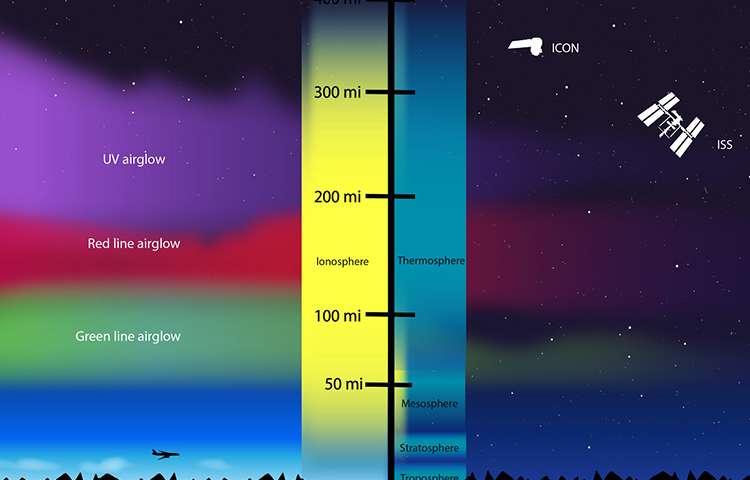ICON to be launched in the summer 2017
NASA's latest space weather research satellite, the Ionospheric Connection Explorer, is on course for a summer 2017 launch after UC Berkeley scientists and their colleagues shipped its four instruments to Utah for testing, prior to being packed into the final satellite. The ICON mission, led by UC Berkeley's Space Sciences Laboratory with the help of scientists and engineers from around the world, will add one more satellite to NASA's fleet of 26 heliophysics satellites.
Its mission: to understand the tug-of-war between Earth's atmosphere and the space environment.
"This mission will change the way we think about the Earth-space boundary," said Thomas Immel, a senior fellow at the Space Sciences Laboratory and principal investigator for the mission.
"The team in Berkeley and our partnering institutions around the country are delivering cutting-edge instruments that will help us to build a fuller picture of what is driving changes in the ionosphere."
The ionosphere is the edge of space where the sun ionises the air to create constantly shifting streams and sheets of charged particles. In this region 100 miles overhead, Immel said, a continuous struggle between solar forcing and Earth's weather systems drives extreme and unpredictable variability. ICON will investigate the forces at play in the near-space environment, leading the way in understanding disturbances that can lead to severe interference with communications and GPS signals.
Ionospheric changes have only been discovered in the last 10 years, he said, and scientists still don't understand what's causing them. "We see enhancements and depletions of plasma in the ionosphere around the equator across the globe, and our models can't explain them. So we're building ICON to go and find out why," he said.

The ICON satellite will orbit above the upper atmosphere to observe how interactions between terrestrial weather and the ionosphere create airglow, as well as other changes in the space environment. Credit: NASA’s Goddard Space Flight Center
Immel and his team are responsible for the timely delivery of the mission, and ensuring that it will be effective in addressing the science questions that continue to intrigue the science community regarding the equatorial ionosphere and its dynamics.
The satellite consists of four instruments: EUV (extreme ultraviolet) and FUV (far ultraviolet) detectors, built at UC Berkeley; MIGHTI (Michelson Interferometer for Global High resolution imaging of the Thermosphere and Ionosphere), built at the Naval Research Laboratory in Virginia; and IVM (Ion Velocity Meter), built at the University of Texas in Dallas.
All instruments were delivered in March to the Space Dynamics Laboratory at Utah State University in Logan, where the instruments will be connected to the Payload Integration Plate—the common body of the spacecraft that will house the science payload. The integration and testing procedures are a vital part of preparing for flight, ensuring that they will function together as planned.
The Payload Integration Plate, the instruments and the Instrument Control Package together comprise the science payload, which will undergo a series of vibration and thermal tests over the coming months.
The payload will then be shipped from Utah to Orbital ATK in Virginia, ideally by the end of the year, where it will be integrated onto the main spacecraft "bus"—the guts of the satellite that controls communication, attitude and other overall controls. Orbital ATK will prepare it for integration with the Pegasus launch vehicle in the spring of 2017.





